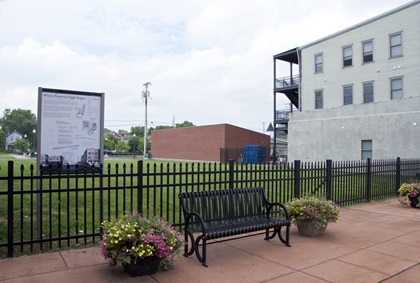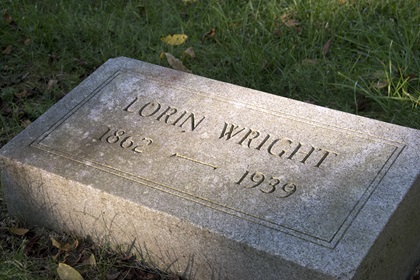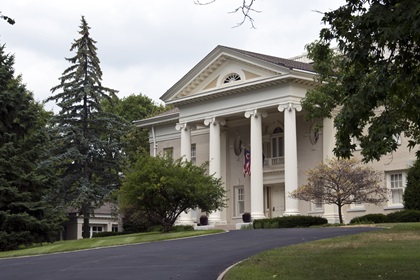What you never knew about the Wright brothers
Amaze your friends with trivia about Wilbur and Orville
You’d think Milton Wright would be disappointed by his two youngest sons—high school dropouts who wouldn’t move out of the family home, fussed over their appearance, never married, and jumped from job to job. First, his boys tried a newspaper and printing business, then a bicycle shop, and finally they got the dang-fool idea that they could fly.
Today, Wilbur and Orville Wright are recognized worldwide as the epitome of the American inventor and tinkerer—homemade engineers and self-taught pilots. In addition to having their heads in the clouds, they were unusual guys in other respects and led interesting lives. Remember these Wright brothers facts to amaze your pilot friends during those hangar talk sessions.
In 1878, when Wilbur was 11 years old and Orville 7, their father brought home a helicopter-like toy made of paper, bamboo, and cork with a rubber band as a motor. As adults, the brothers recalled this toy had sparked their interest in flight. The "bat," as they called it, "flew across the room till it struck the ceiling, where it fluttered awhile, and finally sank to the floor." Wilbur's first letter to the Smithsonian mentioned it, and Orville wrote about the toy in a letter in 1929. Obviously, it made quite an impression on the young inventors.
2. More Wright brothers
There were more brothers than just Orville and Wilbur. Their mother and father had five sons and two daughters; one of each sex died in infancy. The four surviving brothers were Reuchlin (1861–1920), Lorin (18621939), Wilbur (1867–1912), and Orville (1871–1948), and the surviving sister was Katharine (1874–1929). The eldest son, Reuchlin, attended college for a few years, worked as bookkeeper in Kansas City, Missouri, then became a farmer and lived to see his brothers become famous. Lorin followed Reuchlin to college and also became a bookkeeper. He returned to Dayton, Ohio, and assisted Wilbur and Orville whenever he could, primarily by managing their financial affairs when they were away. He lived the rest of his life in Dayton and was laid to rest close by his famous brothers.

3. No middle names
None of the Wright children were given middle names. However, their father, a bishop of the Church of the United Brethren in Christ, tried to give them distinctive first names, as he thought the name “Wright” was too common. Wilbur and Orville were named after two clergymen the bishop admired, Wilbur Fisk and Orville Dewey. Reuchlin was named for the theologian Johannes Reuchlin (1455–1522), a German Catholic humanist and Greek and Hebrew scholar. Lorin was named by his parents for a community chosen randomly from a map; they just liked the sound of it.
4. Dropouts
Although neither brother received a high school diploma, both were well educated. Beyond the high school level, they were mostly self-taught through extensive reading. It’s likely they were on par with most college graduates of the time. Wilbur completed four years of high school, but the family moved before he received his diploma. Orville dropped out of school before his senior year to learn the printing business.
5. Looking his best
While the entire family always conformed to the proprieties of dress at a time when no respectable man would leave the house without a tie, jacket, and hat, Orville was known as quite the “swell.” He always wore clothes that suited him best and was meticulous about his appearance, including his complexion. After each beach trip to Kitty Hawk, Orville would return to Dayton deeply tanned by the sun. He would immediately start bleaching his skin with lemon juice and would fade to his normal pale complexion weeks before his brother, Wilbur, who didn’t bother with such things.
6. Coin toss
The Wright Flyer only flew four times at Kitty Hawk during the course of one day, December 17, 1903, for a total flight time of 98 seconds. On December 14, the brothers tossed a coin to see who would make the first test flight and Wilbur won. However, he stalled on takeoff, hit the sand, and caused minor damage to the aircraft. Three days later, on December 17, Orville had his turn and made the first flight of a powered, heavier-than-air aircraft, a 12-second jaunt. The brothers swapped turns, flying three more times before a gust tossed the Flyer and damaged it extensively. The brothers packed up the wreckage and it never flew again.
7. Four, then 105
While the first Wright Flyer flew only four times, the Wright Flyer II flew a total of 105 flights during the summer of 1904. It was the first airplane to make turns and complete a circle. Its longest flight was more than five minutes. After such a successful flying season, the Wrights used the engine and mechanical parts to build the Wright Flyer III. All the well-worn wooden parts and fabric were burned, so the Wrights’ second airplane no longer exists. The Wright Flyer III can be seen at Carillon Historical Park in Dayton.

8. Five bikes
Every aviation enthusiast knows how the Wright brothers built their first airplanes in the workshop of their bicycle shop in Dayton. At the Wright Cycle Co., Wilbur and Orville sold and fixed bicycles, including some of their own designs. Earnings from the business funded their aviation experiments. Today, if you found a Wright bicycle, it’d be worth a significant pile of cash, as only five bicycles made by the brothers are known to exist. You can view a Wright bicycle at the Smithsonian National Air and Space Museum in Washington, D.C.
9. Only once
The Wright brothers promised their father that they would never fly together, as he feared losing both sons in an airplane accident. The brothers also wanted one to survive, should there be an accident, to carry on their work. Orville and Wilbur flew together only once, with Orville as pilot in command and Wilbur as passenger, on May 25, 1910. This was the same day that their father, at age 82, took his one and only flight.
10. Never married
The aviation-crazed brothers never married, even after they became celebrities and many women, some wealthy and famous, displayed considerable romantic interest in them. Wilbur claimed he “didn’t have time for both a wife and an airplane.” The two other Wright brothers and sister did marry, and have families and children.
11. Bad oysters
Wilbur died at age 45 of typhoid fever, which he probably contracted from eating contaminated oysters at a Boston hotel. There’s an effective vaccine for typhoid now. Today, his death would be attributed to unsanitary food handling practices, or the oysters may have been drawn from waters polluted with sewage.
12. Monster mansion
The boys from Dayton, who lived in their father’s home into adulthood and were always described as “down-to-Earth,” built a rather ostentatious mansion once they grew wealthy from airplane sales. Wilbur didn’t live to see it completed, but Orville, his father, and his sister moved into Hawthorn Hill in 1914, built on 17 acres of land south of Dayton. Orville lived there for 34 years before having a heart attack while tinkering with the electric doorbell. Many famous people visited him there, including Henry Ford, Thomas Edison, and Charles Lindbergh, just after his 1927 transatlantic flight.

13. Smithsonian squabble
The Smithsonian Institution refused to give the Wright brothers credit for the first powered flight, preferring to promote the work of a previous Smithsonian secretary, Samuel Langley. Langley’s “Great Aerodrome” was launched from a houseboat earlier in 1903 on the Potomac River and immediately crashed into the water.
In 1914, the Smithsonian hired Glenn Curtiss to rebuild and test the Aerodrome. After significant modifications and using a different engine, Curtiss made a few, brief “hops” in it. The Aerodrome was subsequently displayed at the Smithsonian as the, "first man-carrying aeroplane in the history of the world capable of sustained free flight."
That rankled Orville, who sent the 1903 Wright Flyer to the London Science Museum in 1928. It remained there until the Smithsonian recanted its claims that the Langley Aerodrome was the first to fly and gave the brothers the credit they deserved. The Wright Flyer was installed in the Smithsonian Institution on December 17, 1948—45 years to the day after the aircraft's only flights.
14. Where’s home?
Today, the site of the Wrights’ home in Dayton is a vacant lot, with the layout of the house marked in concrete. In 1937, Ford purchased the Wright brothers' house and bicycle shop and moved them to Greenfield Village in Dearborn, Michigan. The village is a collection of historic American buildings and a history museum established by Ford. You’ll have to go to Michigan to see the home and workshop of the Ohio brothers.
15. Fly me to the Moon
Neil Armstrong carried several small pieces of the 1903 Wright Flyer—fragments of the wooden propeller and snippets of the wing fabric—to the lunar surface during the Apollo 11 moon landing. Today, you can view some of these on display at the National Air and Space Museum in Washington, D.C. (In addition, part of the Wright Flyer is currently on Mars.)




